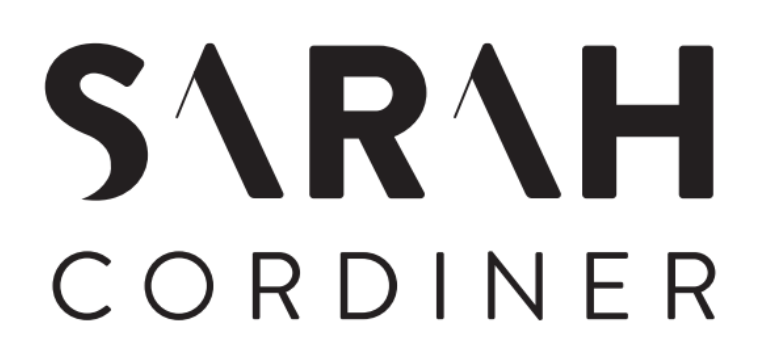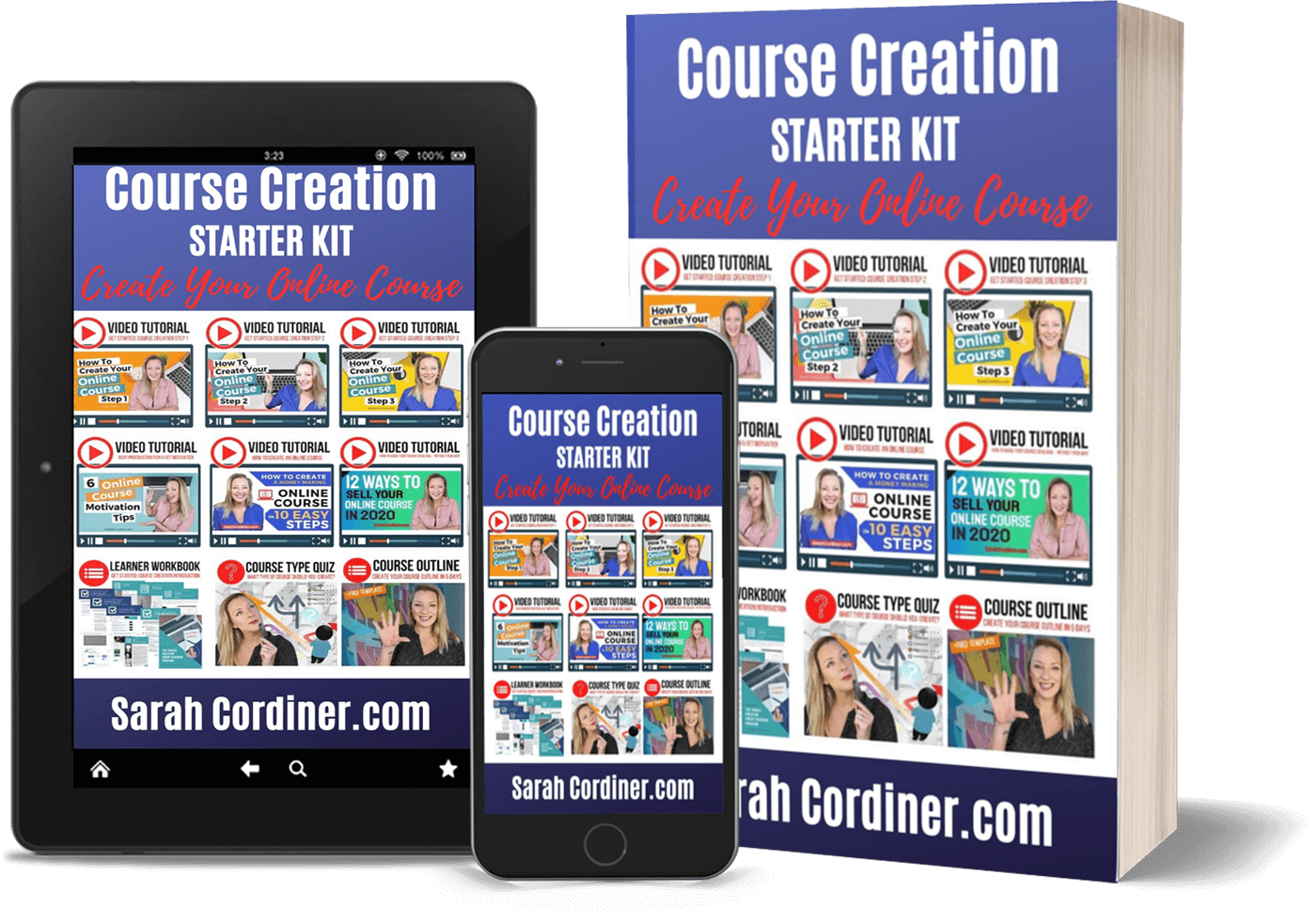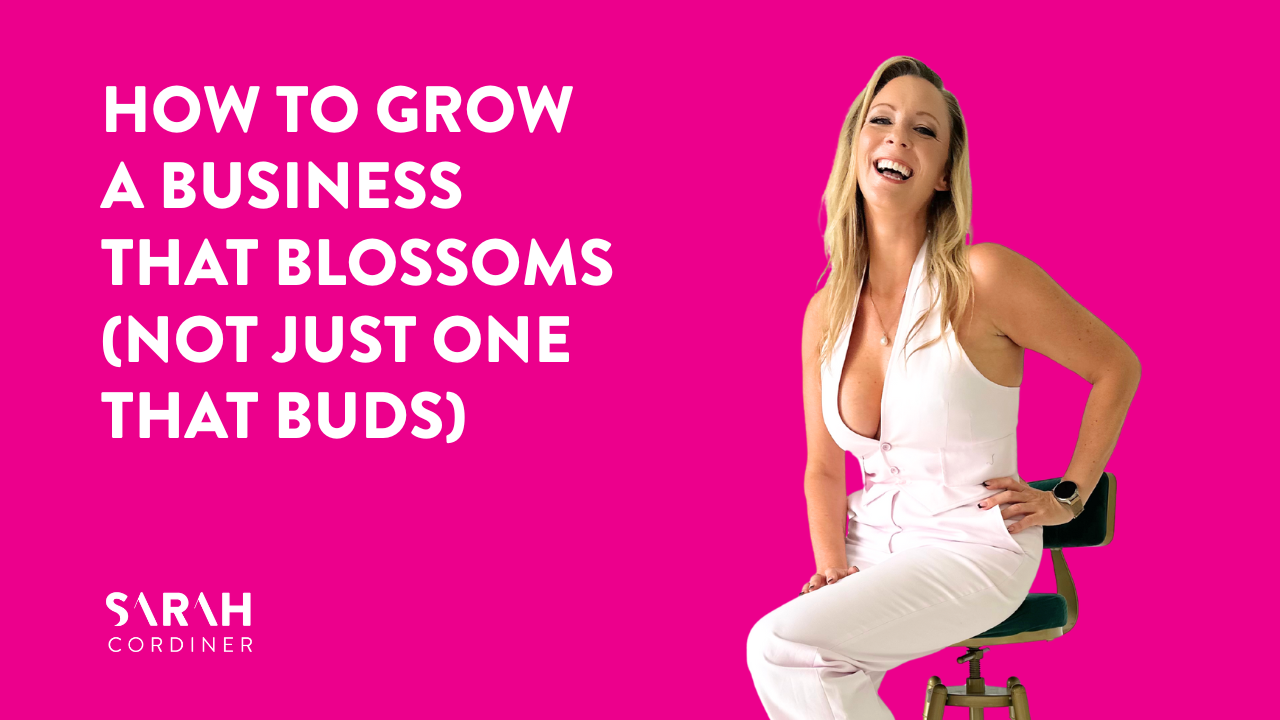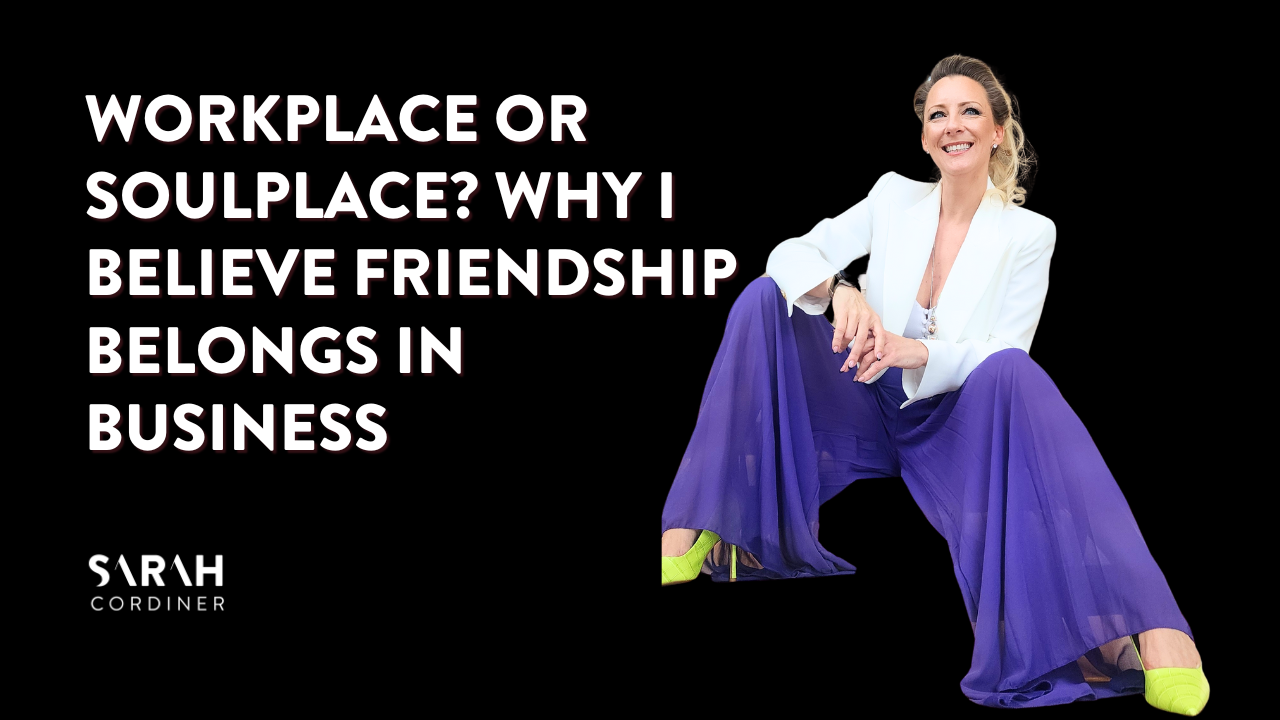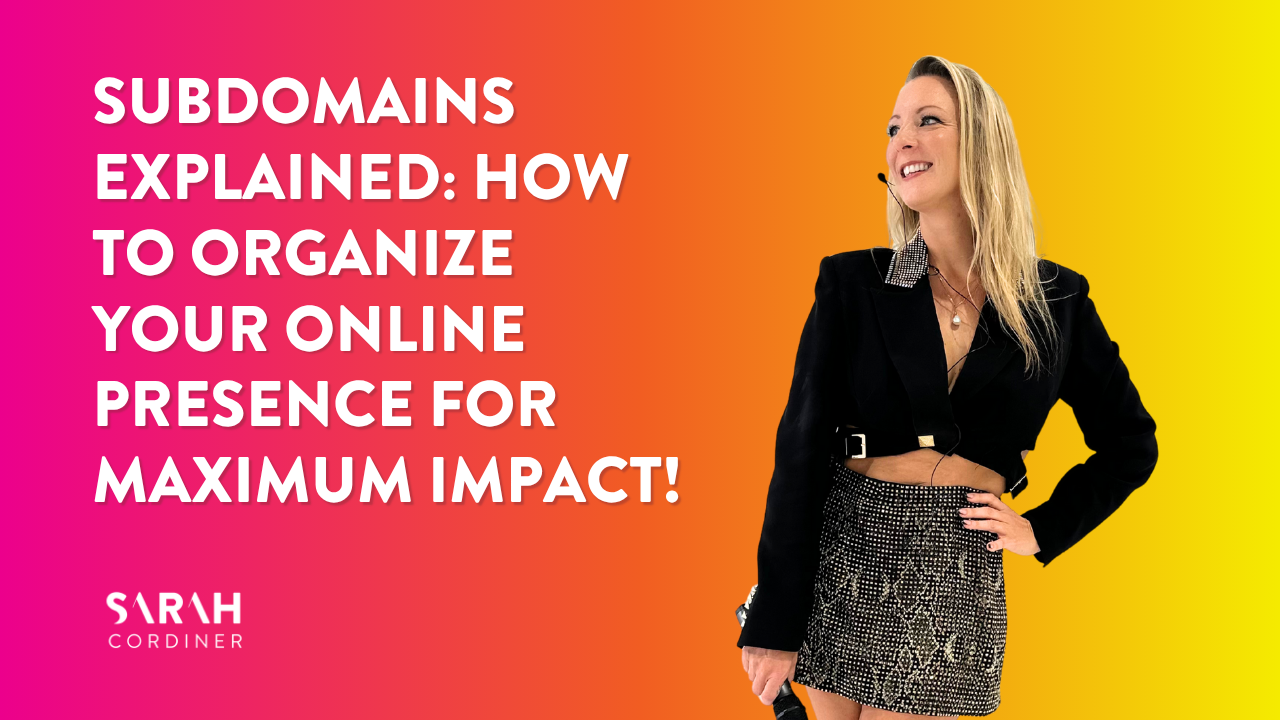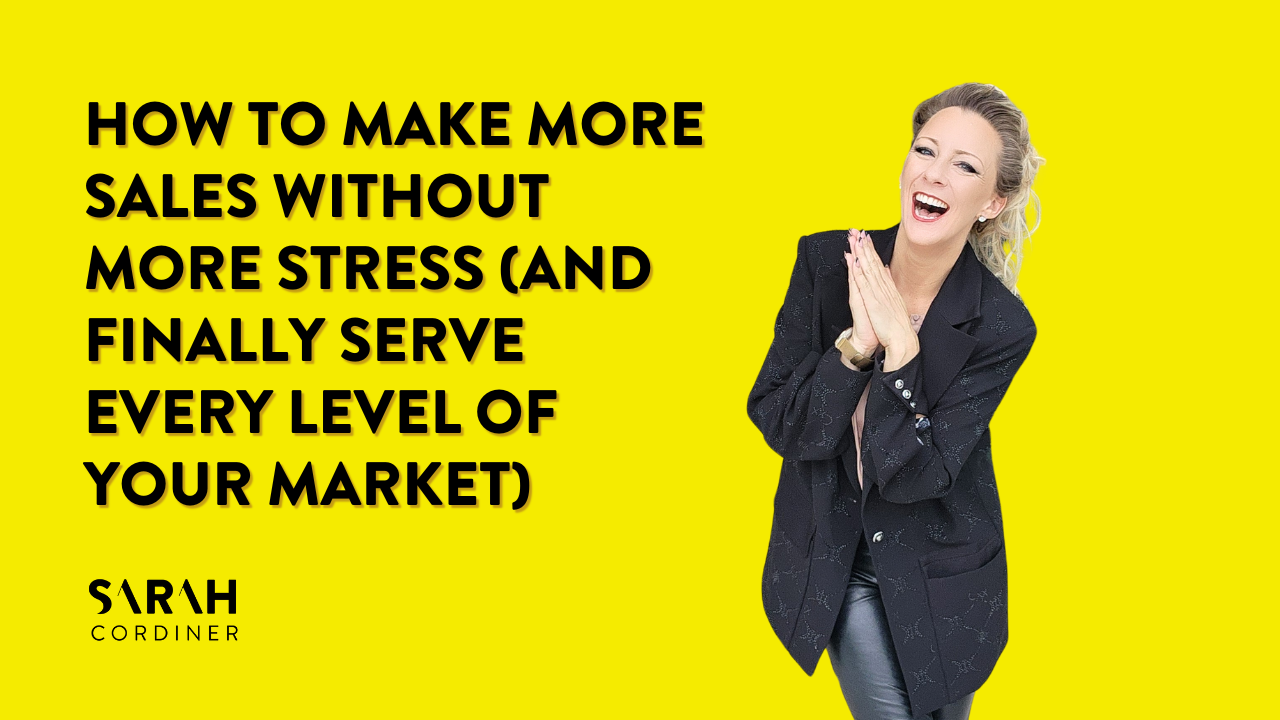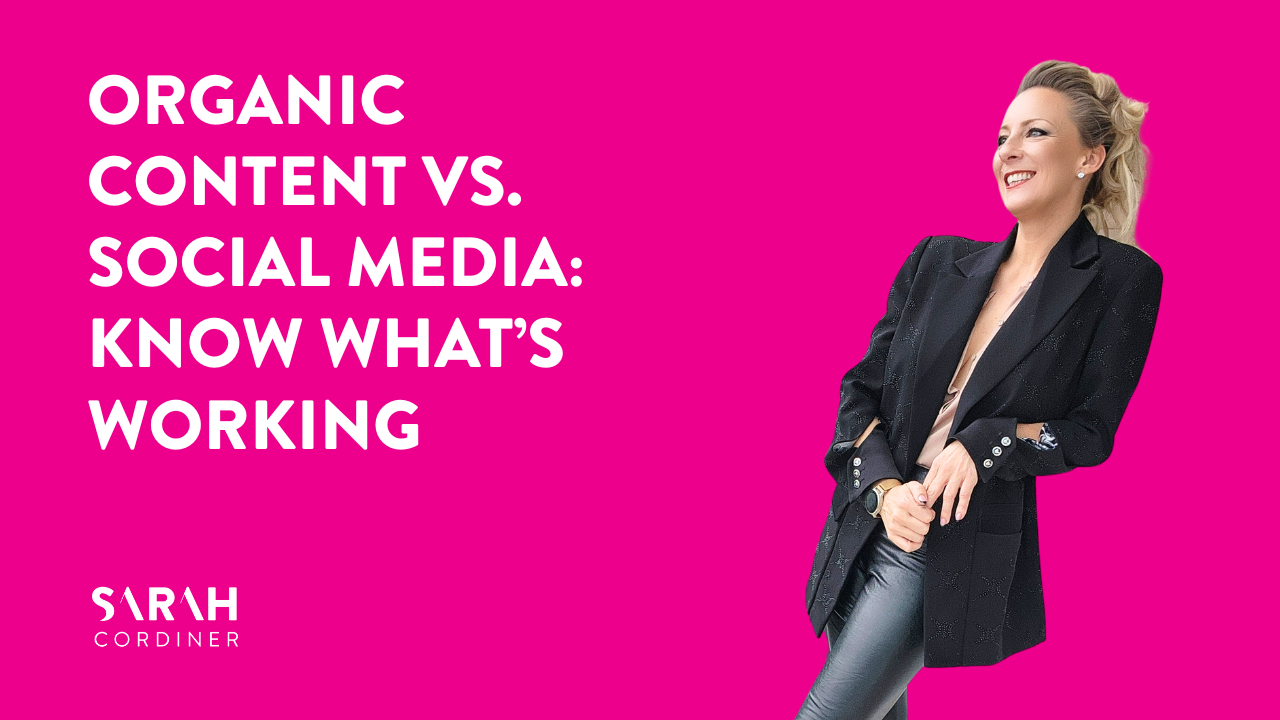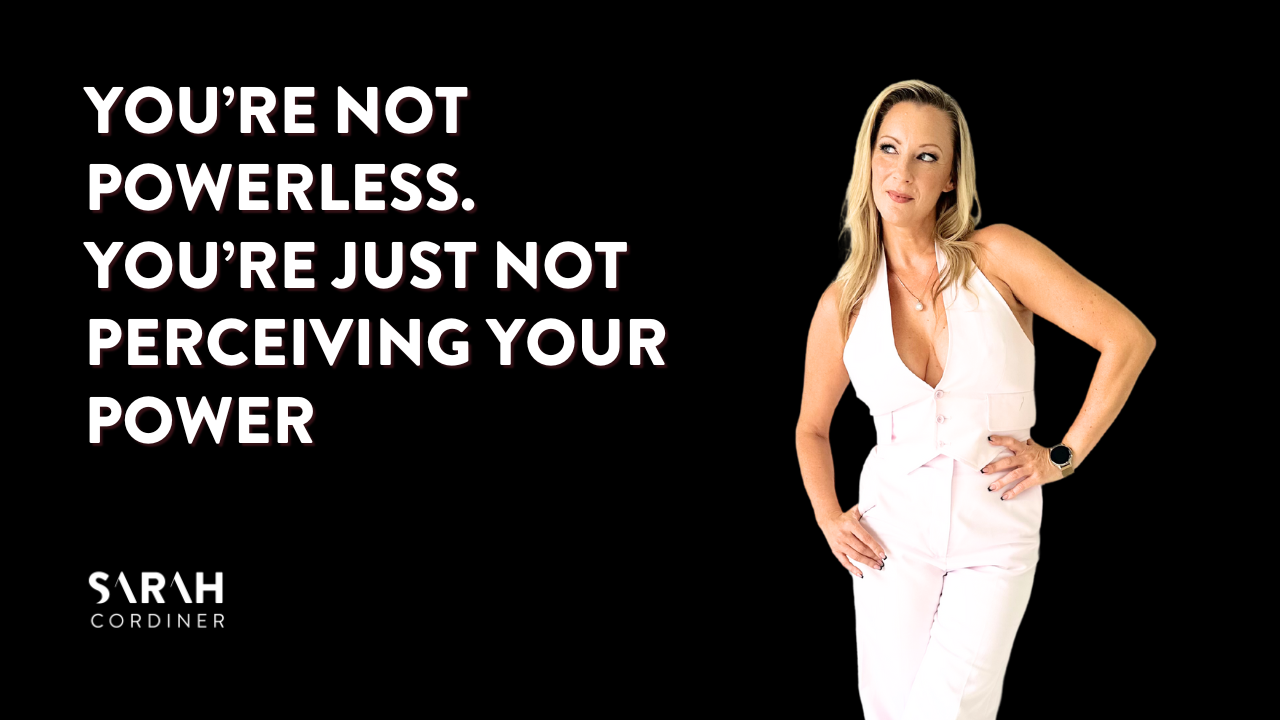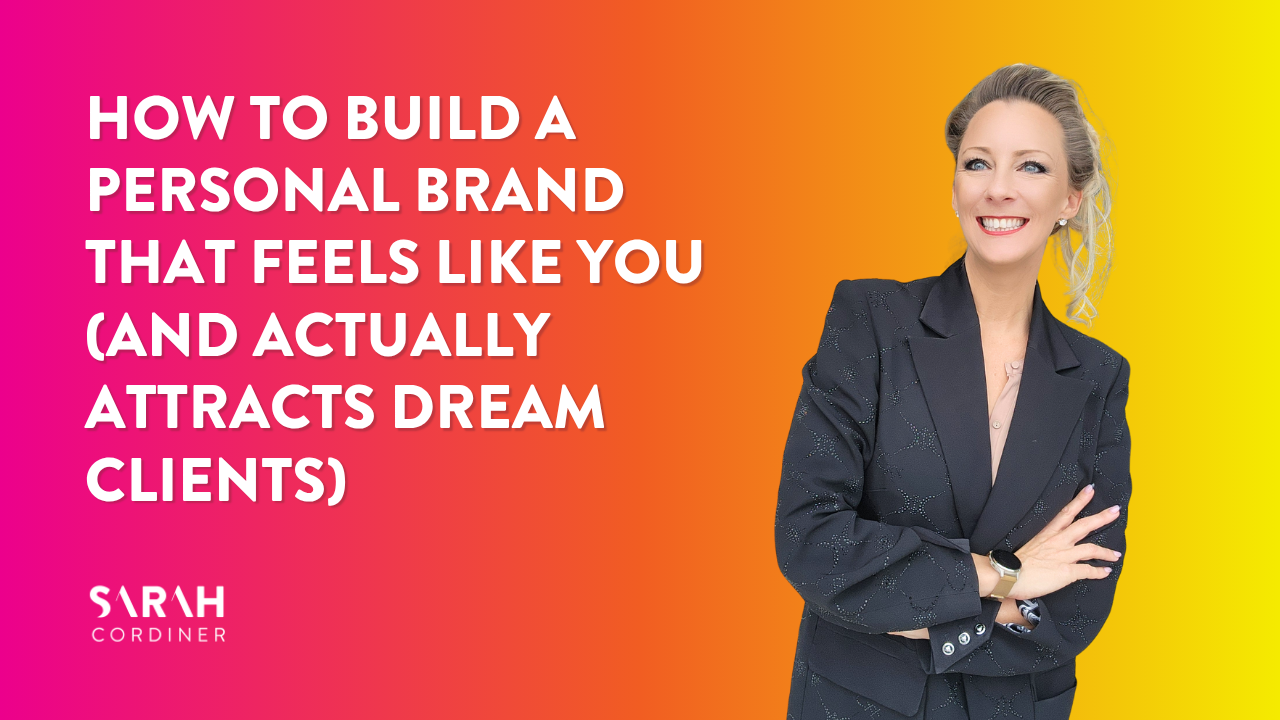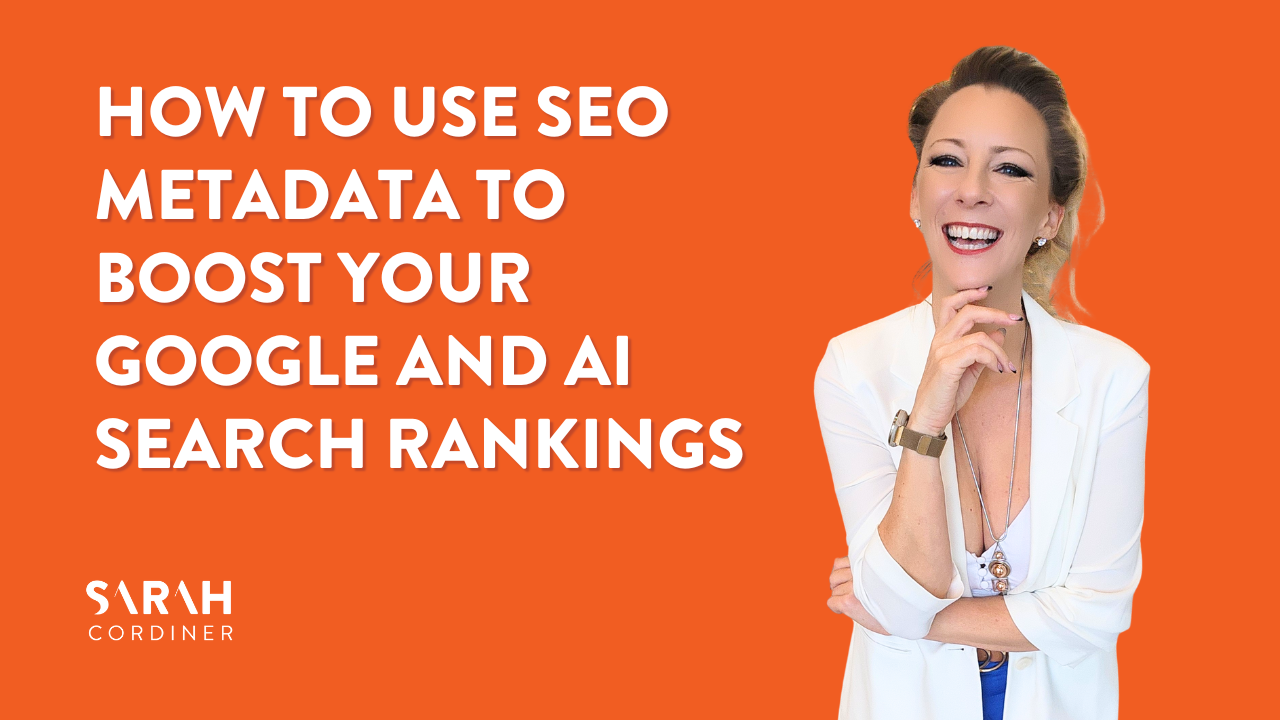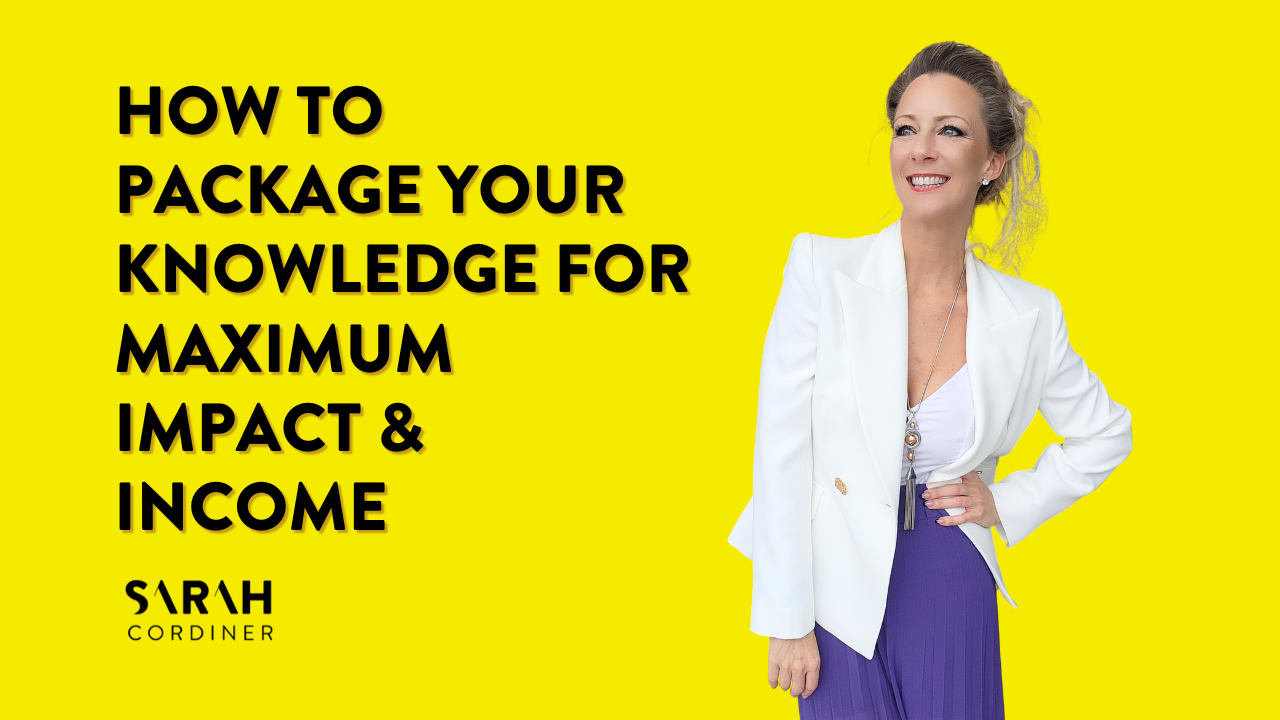The Course Creators
Podcast
Level Up Your LinkedIn as An Online Course Creator – with Jo Saunders
Get Sarah's FREE Course Creation & Business Growth Training
Level Up Your LinkedIn as An Online Course Creator – with Jo Saunders
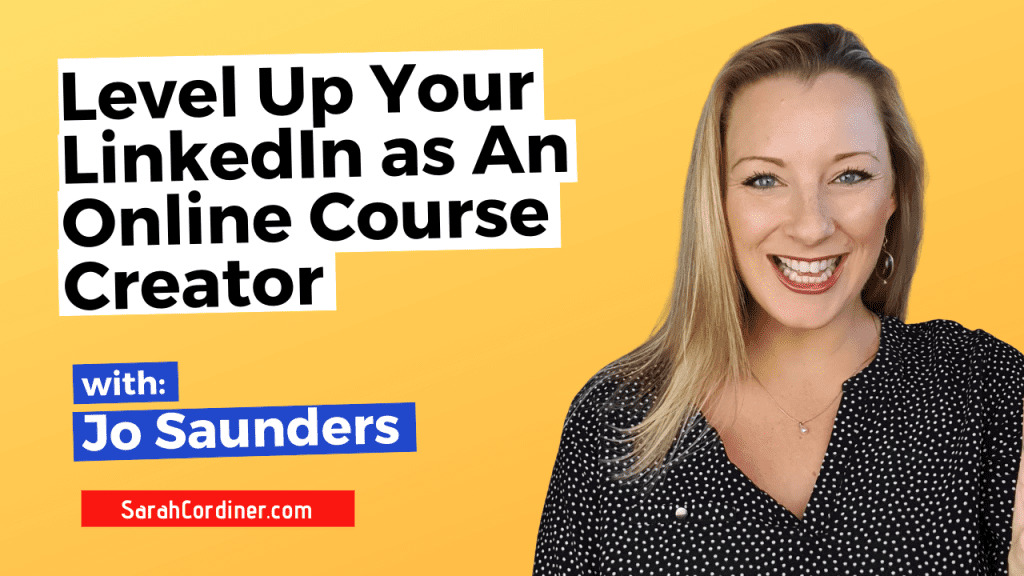
Shownotes
LinkedIn has been a massive part of my social system, my marketing, my connections with my audience, with my keeping my finger on the pulse in my industry.
I believe that course creators, coaches, consultants, speakers and authors could be using this platform way better.
So in this episode we’re going to be talking with a LinkedIn expert, LinkedIn demystifier: Jo Saunders to get some tips about what to do and what NOT to do on LinkedIn.
Resources
Subscribe To My Podcast
Transcript
How to connectfluence on LinkedIn
One word I’ve come up with that explains what I do is Connectfluence. It’s the intersection of connection and influence. Now, it’s not about becoming an influencer, but you become influential through having connection. As course creators, coaches, consultants, experts, speakers, these things are critical to, not only us establishing our businesses in the first place, but maintaining them and growing them and scaling them as well.
I love Linkedin for this, because it doesn’t take as much time as some of the other platforms. You don’t get sucked into the vortex of Facebook. I go into Facebook to do something, generally for a client, and then on the way in I get distracted. LinkedIn is not as distracting as those platforms. I like it because the theme is about business growth, growing your personal development, professional development. You don’t get people there ranting about stuff generally. It’s a very positive, there’s not much negativity.
But what I really love about it, is the reach that it gives you. You have the ability to post something and reach three degrees away. If I post something, you engage with my update, you’re exposing it to your network. If they engage, they’re exposing it to their network. The other social media platforms just don’t work that well for disseminating information. So it gives you more exposure, which allows you to build more connection with people, more influence.
Who should be using LinkedIn?
Everybody needs a LinkedIn profile, I believe. Whether you need it and you’re going to use it is a different story, but why would you not have one? It’s free. It’s indexed by Google. It helps you rank for your name, and you can also rank for what you do. So, it’s just a no-brainer. You want to have an optimized profile with the right keywords and phrases throughout, in terms of what your expertise is, what your course is, what your business is. So that people can actually find you. You’ve got multiple ways of being found. You’ve got your profile, and you’ve got a company page, and you want to have both set up at a bare minimum.
Now, whether you use it or not is a different story. It comes down to: is your audience on LinkedIn? There are some people whose audience may not be. How often you use it, is going to be dictated by your industry too. The thing I love is that you don’t have to put a lot of content on. On LinkedIn, you could post once a week, and that’s enough because of how LinkedIn works. The rest is about engaging.
How to start on LinkedIn
If you’re just starting out, just make sure your profile is something that you’re proud of, that represents you well, it positions you well. It’s got up-to-date images, profile photo that looks like you, and then just have all the sections filled out. Just keep working on it. Don’t wait for it to be perfect ’cause it’s never done. It’s always evolving.
The next step is, you want to start building a network of connections. Start with the people you already know. Who do you know in this course-creating community? If you’re a member of Sarah’s group, for instance, there’s probably people there that are on LinkedIn. And even do a post and say, “Who’s on LinkedIn, love to connect with you.” But you’ll also find LinkedIn will start suggesting people. The more relevant connections you have, the more relevant the suggestions are. This is why you want to connect to only people that fit your target market, your ideal clients, or influencers of them.
When you connect to somebody, you’ll start seeing their updates in your feed. As a nice way to get started, that’s intimidating than creating your own content strategy, is to engage with someone else’s content. If I comment on your update, I’m essentially putting myself in front of your audience, but I’m also exposing you to my audience that’s growing. So you’re building together, which is Connectfluence .
How NOT to connect with your target audience
The big no-no is being spammy and salesy. The worst thing you can do, even if it’s someone you know, is to send them a connection request, and trying to pitch to them in the process of connecting, because that’s the wrong time. Pitching on LinkedIn is a challenge, because it’s not a sales platform, but it is. People don’t like it when people jump in and start selling and promoting.
And don’t send a blank message, as in, if you see someone on LinkedIn, their profile’s come up, and you hit the connect button without personalizing it, don’t do that. Because firstly, they might not connect to you. Look at their profile, find something to talk about. I might mention something about an achievement, something you’ve done, something you’ve shared, something I can relate to, because if I talk about you, you’re going to be interested because now we’re starting a conversation. I’m actually showing interest in you. So, do your homework.
Now, the one thing not to do is, particularly if you’re a male speaking to a female, is don’t compliment someone on their eyes or their hair. It’s just a bit creepy. Also, if you go and abbreviate someone’s name, and their profile says their full name, but you don’t know them well enough to do that, you’ve jumped ahead as well. Even if you’ve heard someone else refer to them like that before. Keep it friendly formal initially. If you start seeing them signing off as Jo, or whatever their abbreviated name is, then you know it’s okay to use it.
How to promote, share and sell your course on LinkedIn
There’s certain parts of the profile you want to make sure that your course is showing up. So, in your headline, if that’s your primary thing you want to lead with, make sure you mention it there, or in your area of expertise. In the “about” section, make it part of your story. Talk about where it came from, how it started, who it’s for, that sort of stuff. And then in the “experience” section, this is a big one, is to share a role about the course.
You can have up to five jobs for each company, and if you run a business, you are wearing multiple hats. Now, I’m not talking about you’re wearing marketing, you’re wearing finance, not those sorts of hats. It’s more about what do you want to be seen as? So, if you’ve got a free course as part of your funnel, put it up the top. And if you put it first it will actually rank in Google as well, next to your name. And then put in what else you do, like, I do a lot of speaking, conference speaking, that sort of thing, so I’ve got a role as a speaker. I’ve got a role as a trainer, and a role as a consultant because they’re three modes of delivery, and that way I’ve got three pieces of real estate on my profile where I can write about that particular thing. I’ve also got three reasons to get recommendations from people, because you can only get one recommendation per person.
Content for LinkedIn
So you do want to share content, but don’t just share “buy my stuff” content. Use content to tell stories, and inadvertently share your stuff. So if you can share an image of something to do with the outcome, or some analogy, that you can refer back to your course. So, for instance, I tend to tell a story about something, or a how-to post, but the image is of me on stage. So I’m subconsciously saying, this is what I do.
Now there’s three types of content, not only on LinkedIn, but anywhere.You’ve got educational content, like how to do something. Then you’ve got the enlightening content, the stuff that you’re inspiring people to think differently, or do differently. And then you’ve got entertaining content. Now, if you can do all three in one post, you’re onto a winner.
BECOME AN EXPERT IN YOUR INDUSTRY
Whether you love to learn how everything works yourself to master course creation and expert-based business skills for life;
want to join a group of like-minded people to enjoy the course creation journey with;
or you just want the entire job done for you - I can help you design, develop and publish high-quality online courses in any industry on your own custom created online school, complete with all of your marketing integrations set-up and running.
There are 3 main ways to become a stand out expert in your field with your own courses, books, services, consulting, speaking and industry presence:
